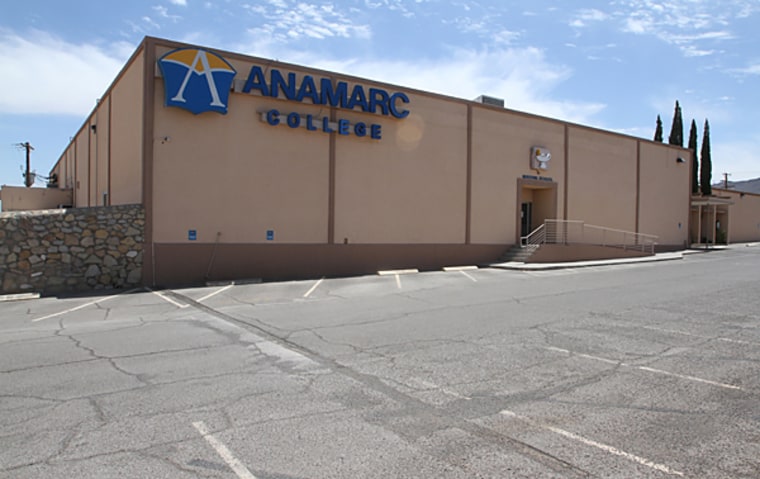
The following year, its score slid to minus-0.8. By the time the government had that information, though, Anamarc was only a few months from closing. The department gives for-profit schools six months from the end of the fiscal year to submit audited financial statements and then begins reviewing them. (Nonprofit institutions have a year to hand in their information.) The department placed Anamarc on its highest form of monitoring just 11 days before it shut down.
This lag time is one of the biggest problems with the composite score, experts say. The ratings are also poor predictors of school closures. A 2017 Government Accountability Office report found that half of the colleges that had closed since 2010 had recently received passing scores.
Related: Another pandemic-related threat to universities: falling numbers of graduate students
As the coronavirus pandemic strains colleges’ budgets, the National Association of Independent Colleges and Universities has asked the Department of Education to pause calculating composite scores for three years. The group, which represents private nonprofit schools, argued that officials facing the pandemic-related loss of revenue could feel forced to make drastic budget decisions simply to get passing scores.
But experts say that despite the composite score’s imperfections, it still has value. It’s a key indicator to help the Department of Education decide which institutions to monitor. Under federal regulations that went into effect this summer, any school placed on the highest level of this monitoring must submit what’s known as a teach-out plan to its accrediting agency.
Teach-out plans — which typically provide students with a list of schools that offer the same programs — are meant to help guard against the chaos that Mendez encountered when her school shut down.
Accrediting agencies ‘loath to place added pressure’ on schools
Accrediting agencies, which are charged with monitoring higher education institutions, collect financial reports from schools annually and can impose additional monitoring or sanctions. Unless the school meets a federal threshold for submitting a teach-out plan, requesting or mandating one is at the agency’s discretion. (In some cases, accreditors also have the authority to mandate that a school negotiate transfer opportunities for students.)
Critics have long argued that accreditors aren’t tough enough in imposing sanctions on the institutions they oversee, and too frequently give them the benefit of the doubt, including when a school has financial problems. “Accreditors are kind of loath to place added pressure on a school that’s already struggling,” McCann, of New America, said.
NBC News Investigation: Certificate schools are leaving many students in debt and unable to find jobs
JULY 11, 201903:39
Related: Could the online, for-profit college industry be ‘a winner in this crisis’?
In the years leading up to its closure, Star Career Academy, like Anamarc, was on the Department of Education’s radar, on its lowest level of monitoring. Under the new federal regulations, that alone still wouldn’t have been enough to require a teach-out plan.
The Accrediting Commission of Career Schools and Colleges, which monitored Star, was aware that Star had financial troubles, the commission’s executive director, Michale McComis, said, and it had required additional financial reporting from the school. The agency never required any plans for closure. Star shut down abruptly in November 2016.
Two weeks before that, Star was still trying to recruit students. “Surprise your friends and family with your cooking talents this holiday season,” a Nov. 2 post on its Facebook page read. “Our culinary classes start this month.”
For more of NBC News’ in-depth reporting, download the NBC News app
Allanah Fischer was only a few days away from finishing an internship and earning a medical assisting certificate from Star when she heard the news. She stepped into the hall after doing an electrocardiogram with a patient and read a text message telling her that Star was permanently closed.
“I was angry, I was confused, I was so upset,” she said. “We had no warning. At least if we had warning we would be able to prepare. No one knew anything at all.”
The accrediting agency found out the same day as students did. In response, the agency required other schools it accredited that were owned by the same group to find new owners and attempted to help Star students find new schools.
McComis said that Star’s case was an extreme example of disorganized closure and that, in most instances, his agency is able to work more closely with institutions to avoid stranding students. The agency recently updated its standards regarding when teach-out plans are needed.
Deciding when to require such plans can be tricky, McComis said. “Reviewing financials is part art, part science,” he said. “Even though we’re dealing with numbers, which provide a quantitative framework, there’s still a fair amount of qualitative and subjective analysis that goes into it.”
Waiting to require a plan can have serious consequences. Fischer was close enough to finishing her program that she was able to obtain her certificate without completing her internship. But she’d been counting on the school to pay for and help her prepare for a certification exam. She never took that test and was unable to get a job in her field without passing it. She decided to start over, despite her $12,000 in student loans, and is taking prerequisites for a nursing program.
The investment group that had majority ownership of Star when it closed did not respond to requests for comment.
State agencies struggle to pick up the pieces
Like students, state officials can be caught unawares by college closures. Financial data collected by states for nonpublic institutions is limited, as state agencies often don’t have the money or the capacity for extensive oversight, according to David Tandberg, vice president for policy research and strategic initiatives at the State Higher Education Executive Officers Association.
The Georgia Nonpublic Postsecondary Education Commission is able to do more than many other state agencies. It has an external auditor examine the finances of most institutions it authorizes every year. But even its officials received only a few days’ notice before Argosy University closed in March 2019.
The case of Argosy, a national for-profit chain with campuses in 13 states, demonstrated how once a school closes, the help students receive depends on where they are. In Minnesota, for instance, officials from the state’s Office of Higher Education retrieved physical copies of student records from Argosy’s Twin Cities campus and stored them in case students needed them. Students attending the Georgia School of Professional Psychology at Argosy University weren’t as fortunate.
Kimberly Milbrandt, who was studying for her doctorate in psychology, said that she contacted the Georgia commission dozens of times, asking them to help her get her records and figure out her transfer options. The state held transcripts but did not have access to her clinical records, which included details of the thousands of hours she’d put in. They were vital for transferring and for future licensure.
Milbrandt said that school officials, its court-appointed receiver and the state’s higher education agency all offered no help. “We were abandoned,” she said, “at all stages of closure and transfer.”
Laura Vieth, the Georgia education commission’s deputy director, said the commission did try to help. It reached out to all Argosy students and helped some of them access money from a state trust created to help protect students against financial losses when institutions go under, she said. But it was difficult to ensure that all students had a place to transfer, because the school shut so suddenly, she said.
Argosy’s court-appointed receiver, Mark Dottore, said that the closure was as organized as it could be and included setting up transfer agreements and creating a call center for students. He added that 33 students were affected by the records problem Milbrandt had and that his office provided them with a letter describing the situation for any future education or licensing needs.
Lasting consequences
Milbrandt ended up stitching together enough of her records on her own to transfer to the Chicago School of Professional Psychology’s campus in Washington, D.C. But she lost her support network, along with proof of six months of her work, which will delay her graduation a year.
“I’m going to end up having to pay over $100,000 for this degree,” she said. “That’s ridiculous.”
After Anamarc closed, Mendez never re-enrolled in school.
She recalls getting a notice from the New Mexico government with information about transferring, but says she contacted at least half a dozen schools and none would accept her credits.
“It would have opened up a lot of opportunities for me,” she said of getting her degree. “My pay would have gone up. I would have had a lot of job security.”
Instead, she continued working as a licensed practical nurse and remains disappointed by the abrupt end to her education. The year and a half that she spent in school — time lost with her three children and her husband — was for nothing.
“It’s a sacrifice that I’m doing for my kids and my family,” she said. “When all this came down, it was a slap in my face.”

Deja un comentario